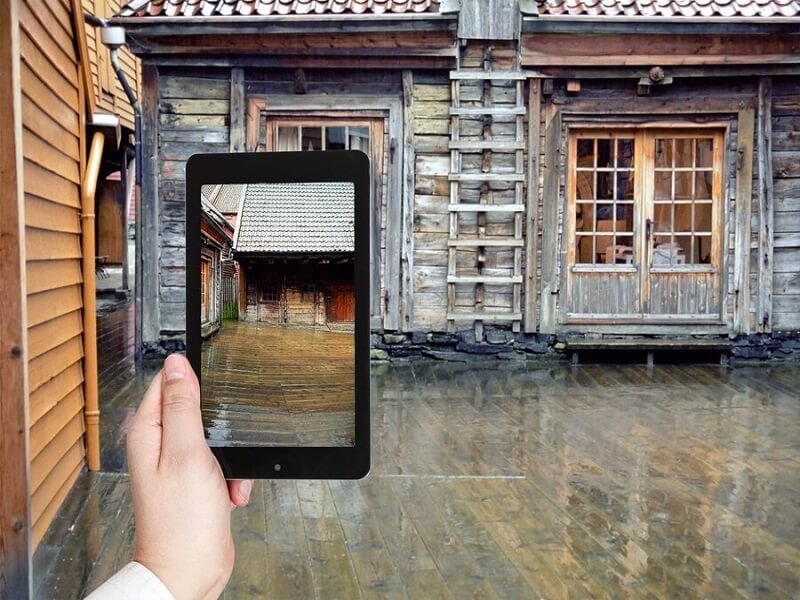
Flood Damage: Causes, Signs, and Solutions
Infectious infections, chemical risks, and injuries can be brought on by standing in floodwaters. More people die from flooding each year than any other thunderstorm threat combined. Fortunately, there are precautions you may take to safeguard your property, family, and self. All harm caused by floods is referred to as flooding damage. Natural occurrences bring on flood disasters, but human activities and inactions have increased their frequency and effects. A flood is when there is an excessive amount of water, and it covers the ordinarily dry area. The science of hydrology includes studying floods. Here mentioned are the causes, signs, and solutions of flood damage:
Table of Contents
What Are the Effects of Floods?
A flood occurs when water from a river, lake, or ocean spills on the surrounding land. Too much rain or snowmelt is the leading cause of floods. Sometimes the soil beneath the earth can make a flood worse. The world usually acts as a sponge, soaking up the rain. However, surplus water will be channelled into a river when the land reaches its limit of water absorption. Because frozen soil cannot absorb water, this frequently occurs during the winter. Floods frequently occur when springtime warmth melts snow before the ground can thaw.
Causes:
Flooding has several human causes, including inadequate infrastructure. Flooding might also happen for natural reasons.
- Heavy rain:
Heavy rains are the simplest explanation for flooding. No matter where you live, infrastructure and equipment are set up to channel rainfall into the proper basins and reservoirs. Usually, the infrastructure takes care of everything, so you never have to worry about where the rain goes when it runs off. Several people work to help the people from flood damage Melbourne.
However, when it rains heavily, those systems get overburdened, and the water should drain more slowly. In other words, the drainage systems become clogged, and water occasionally rises into houses. Usually, this only occurs when there have been heavy rains for an extended period.
Storm surges and tsunamis:
Significant flooding can result from storm surges associated with hurricanes and other storms and from tsunamis occasionally brought on by underwater earthquakes. You frequently know about storm surges and tsunamis before they occur because of modern technologies.
Cloud burst:
Cloud burst is caused by strong precipitation that lasts only a brief time, is occasionally accompanied by hail and storms, and can result in flooding. These occurrences of nature result in water flowing down the mountain sides and flooding the plains.
Lack of vegetation:
Flooding can be avoided by using vegetation to reduce flow. However, with the absence of flora, there isn’t much to prevent water from evaporating. After a drought, this can be a problem. Residents of the area will enjoy the rain, but flash flooding could result from the lack of vegetation after the drought. Since basins and reservoirs are nearly empty, this only sometimes occurs, but it can happen when hefty rainfalls occur after a protracted drought.
Urban drainage basins:
Most of your cities are constructed chiefly of waterproof materials like concrete. There is no ground for water to settle into when you have a concrete urban drainage basin. As a result, low-lying areas will flood when those drainage basins are entire.
Signs of Flood Damage:
Whether you reside in a flood plain, flooding can still occur due to other factors such as slow-moving tropical storms, early snow melt, and intense rainfall, which are standard warning signals. Homes with flood damage allow a homeowner to suffer profound financial loss and severe emotional suffering. Therefore it is crucial to be ready and know who to contact if your home experiences flooding.
Homes that have experienced flooding are devastated by the water, which may transform your street into a swift-moving river, and the rocks, uprooted trees, and other debris that strike your home like missiles. The mould that develops once waterlogged dwellings and their contents aren’t adequately and swiftly rectified is the worst type of damage. It is better to appoint a flood restoration Melbourne for your safety.
Solution for Flood Damage:
While there is no way to stop floods, there are things you may take to lessen their consequences.
- Cleanout eavestroughs and downspouts:
A small amount of water can cause localized flooding, and the damage is most likely if a home isn’t appropriately prepared. You can quickly lessen the damage by clearing gutters and drains so rainwater can flow away. Check to see if the downspouts are clear and pointed outward.
There is a greater chance of floodwaters entering your home’s interior if you live in a low-lying area. If flooding is expected and you own movable items, transfer them to a place where water can’t reach them.
- Reinforce your roof:
Although you might not consider your roof a flood barrier, a leaking roof can result in water damage. The next time you need to repair your roof, consider putting waterproofing material underneath the tiles. Rainwater cannot easily leak in. As a result, it causes damage to the inside walls or ceiling.
- Risk assessment plan:
When it comes to your organization, developing a risk assessment plan should be a top priority. Prepare a plan of action in case staff cannot report to work and think about what needs to happen if there is flooding. Consider an evacuation strategy while preparing for a flood, what supplies, tools, and equipment may be at risk and the best ways to keep them secure in floods.
- Metal flood barriers:
A metal flood barrier is an excellent technique to protect your company from high-velocity water loads. These resilient metal flooding prevention systems have a long and effective flood barrier in flood-prone places worldwide. Melbourne cleaning services will provide you best service to help you from flood damage.
Floods kill by engulfing victims in swiftly moving water or by drowning them. Six inches of water is all it takes to drown someone. Waterborne infections are one fatal consequence of flooding that is frequently disregarded. Floods can also result in fatalities by destroying structures and creating dangerous surroundings.





No Comment